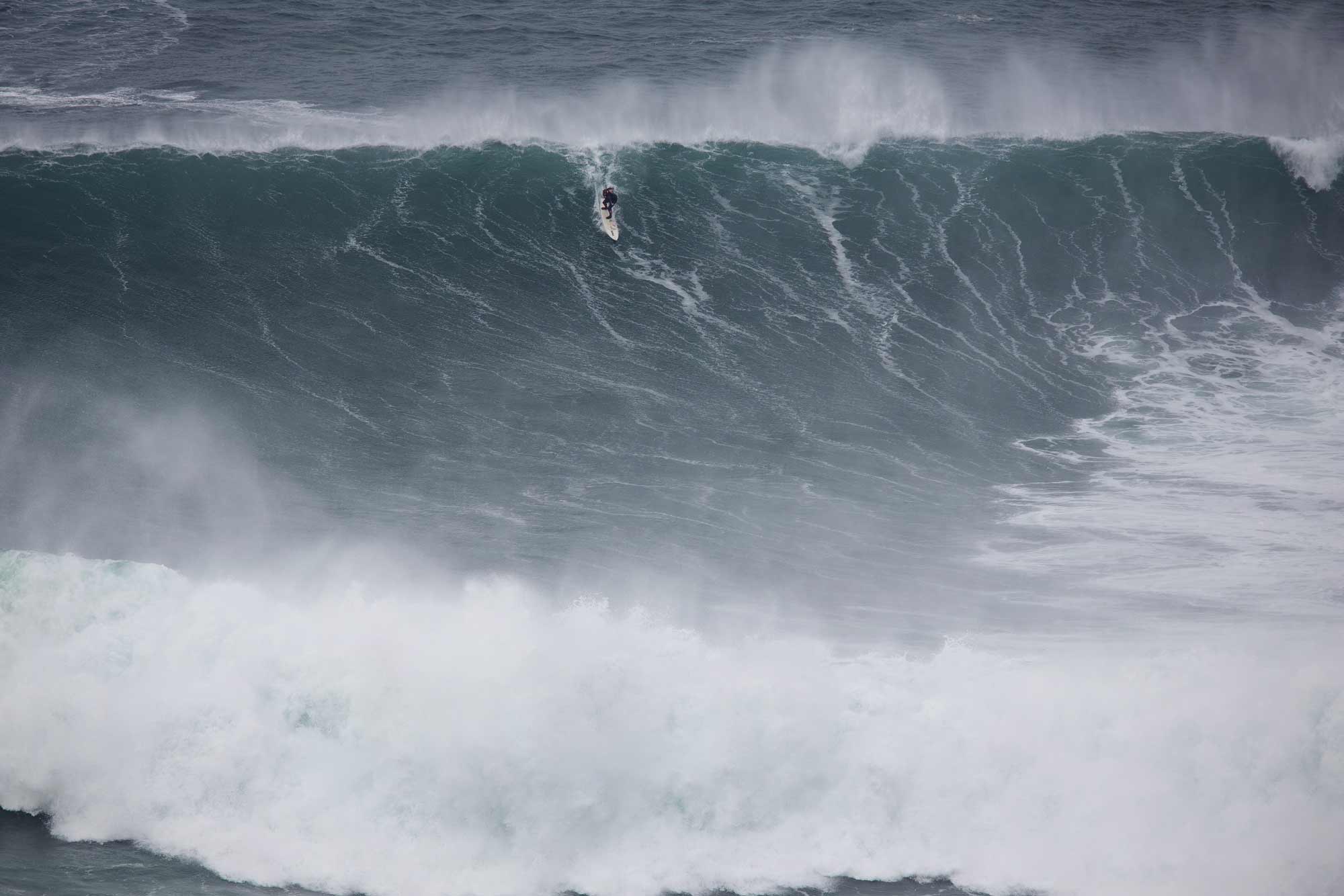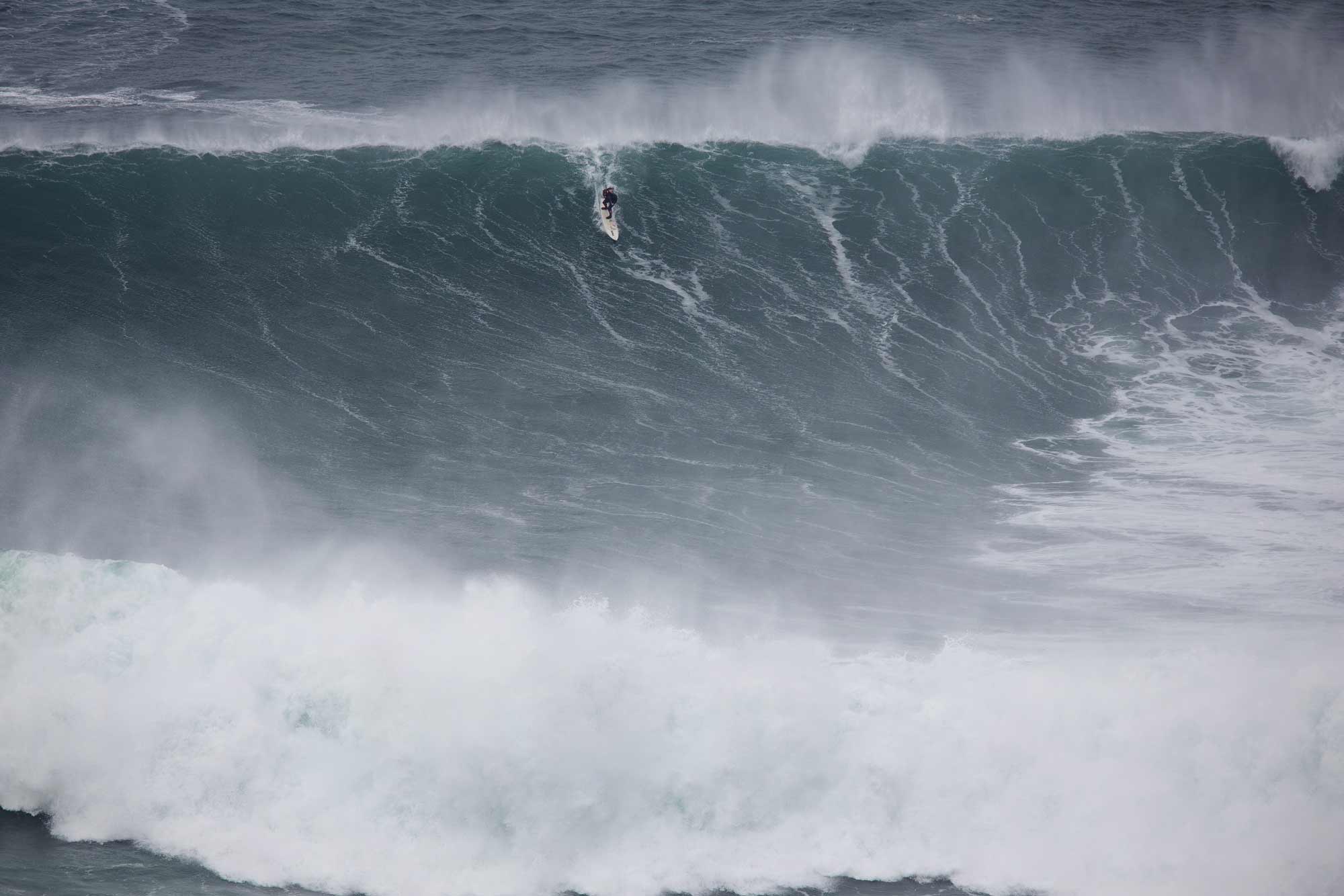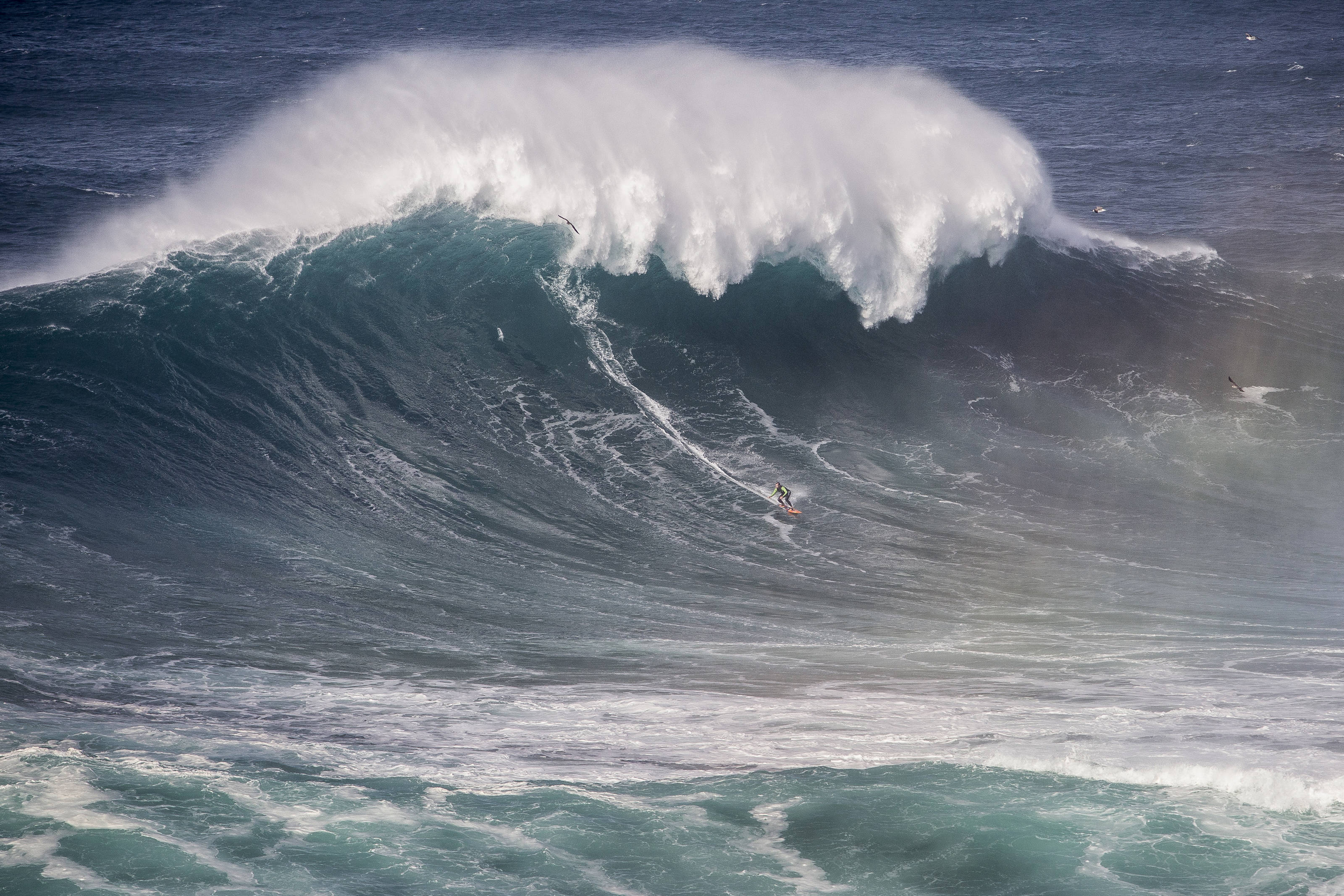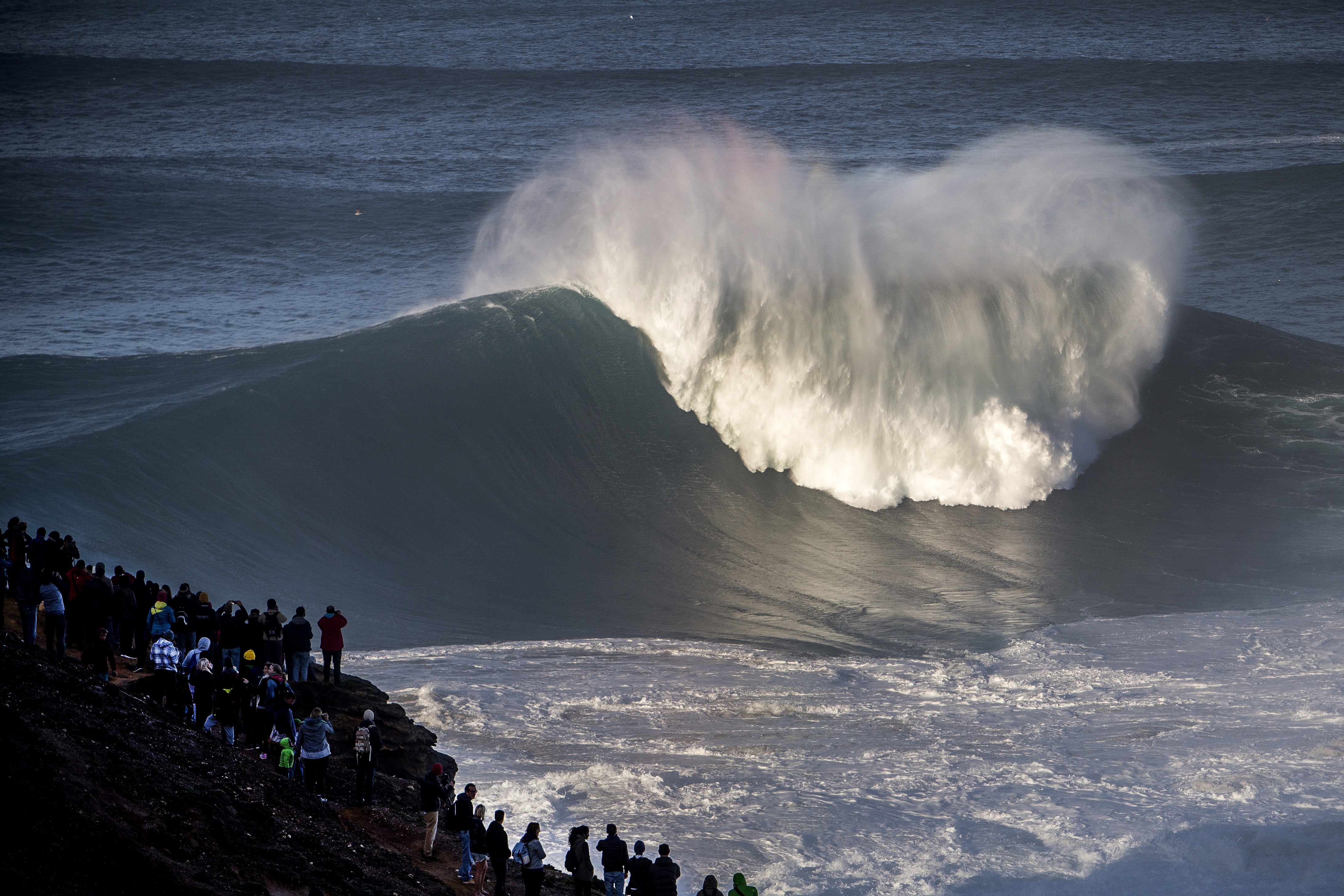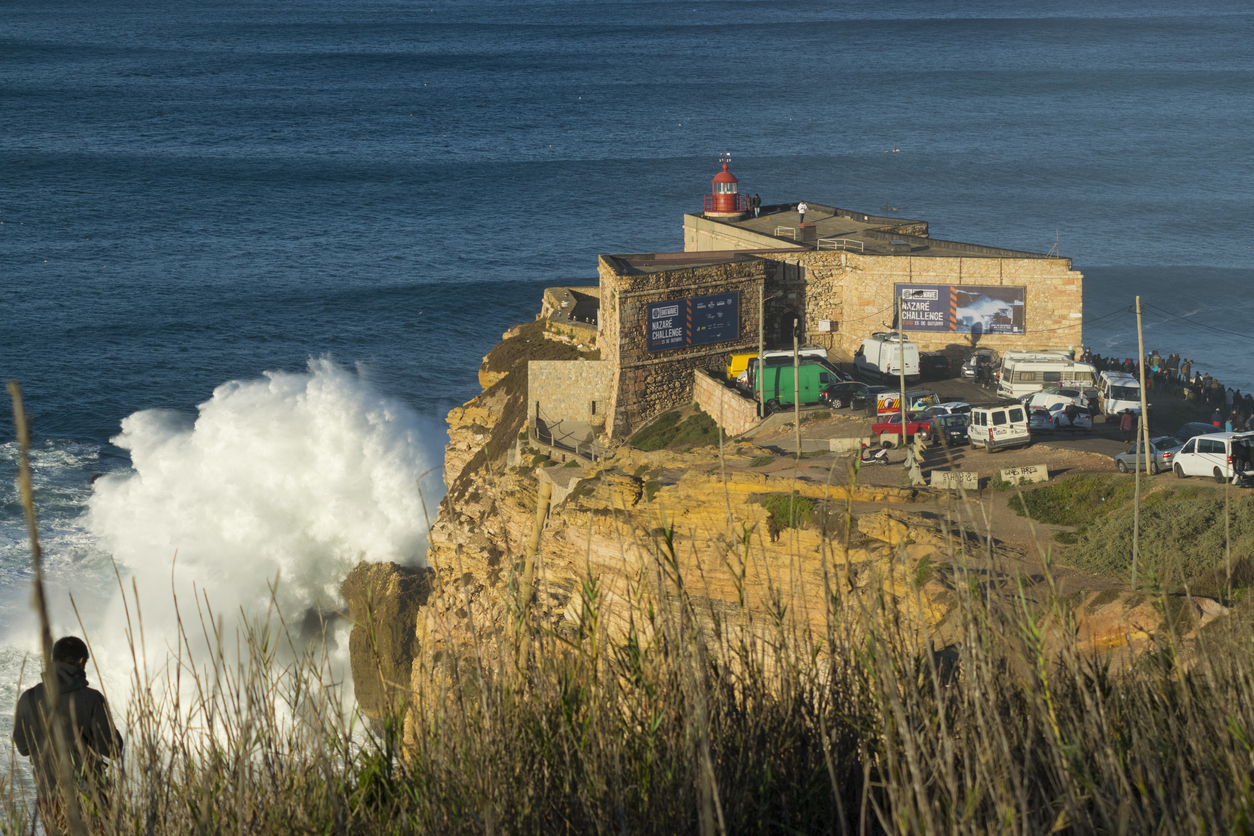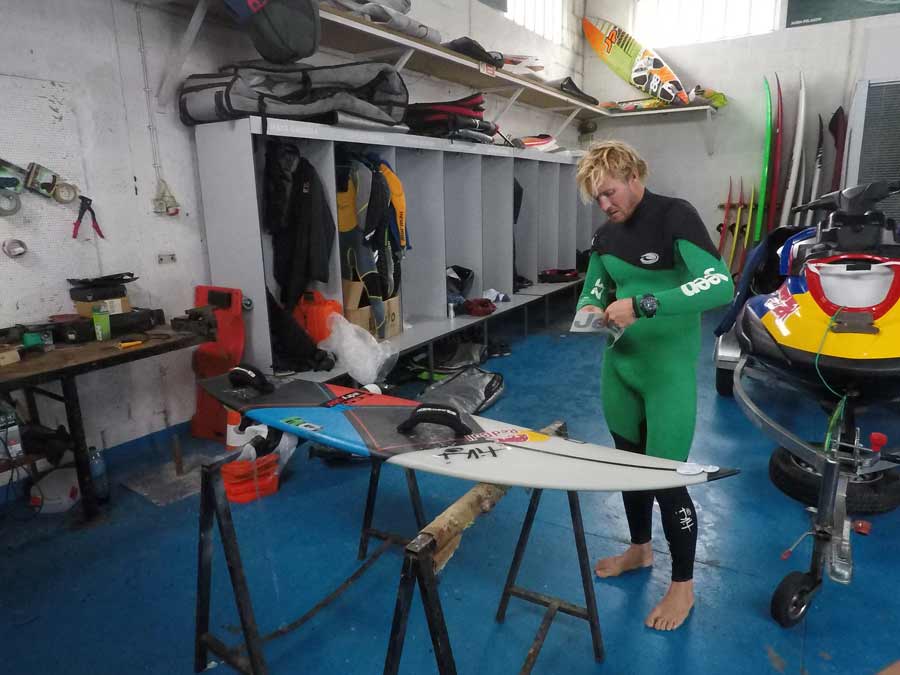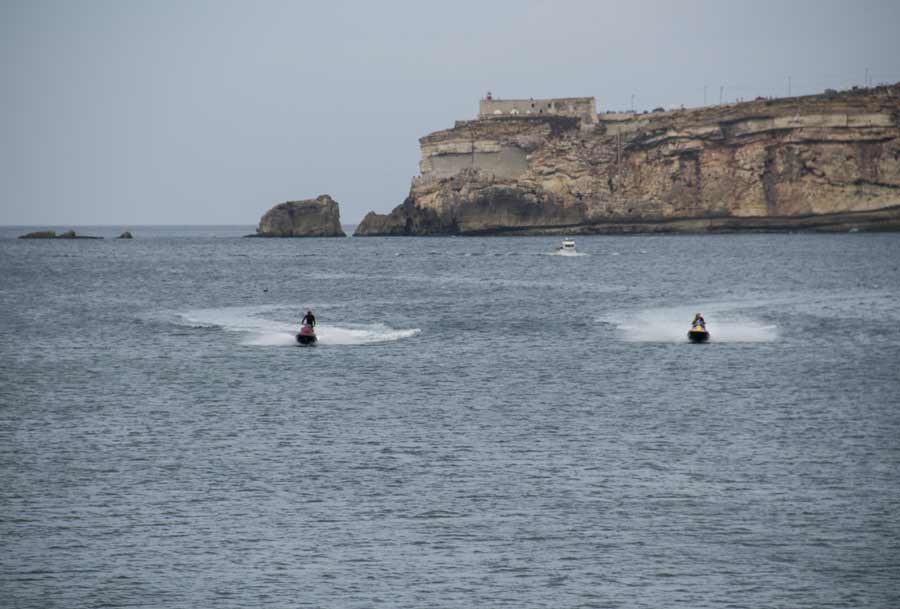Words: James Renhard. Main Image: Hugo Silva / Red Bull Content Pool
Imagine having your body crushed by tonnes of water. 70 foot waves crashing down upon you, pinning you beneath the surface of a furious ocean for minutes at a time. Life being squeezed out of your lungs. Broken and beaten, the chaos subsides for a second, allowing you to eventually surface, but as you gasp for air, another monster wave smashes back down again, pummelling you. It’s a long, slow, punishing assault on the body and mind, with no sign of stopping.
Now imagine this being your job. Your vocation. How you make a living. And moreover, one you travel the world for, making personal and financial sacrifices to do. This is the life of a big wave surfer.
The incident described above might sound like a work of fiction – the trope of some overly graphic torture-porn film. However, it’s not fiction. It’s exactly what happened to big wave surfer Maya Gabiera at Nazaré, Portugal in 2013. Luckily, Gabiera survived the ordeal, being pulled from the punishing assault by fellow big wave surfer Carlos Burle.
I headed to Nazaré – the place that almost took the life of Gabiera, and current home of the largest recorded wave to be surfed in history – to ask why. Why do people choose to put themselves through this ordeal? What for? Why do people surf big waves?
